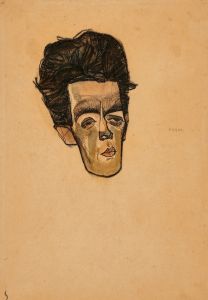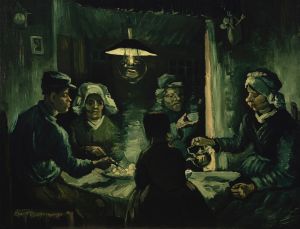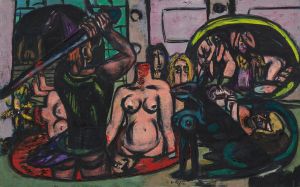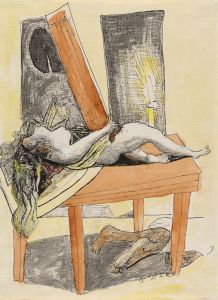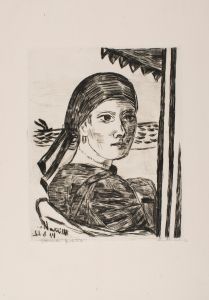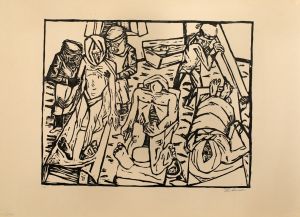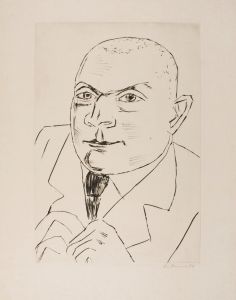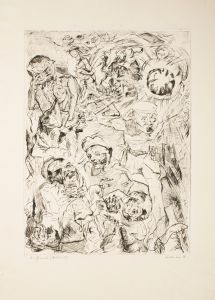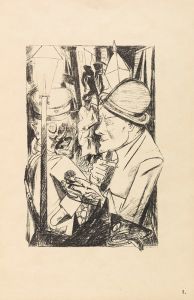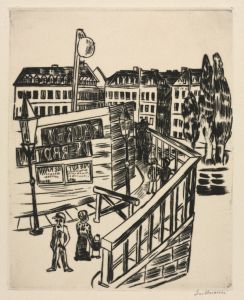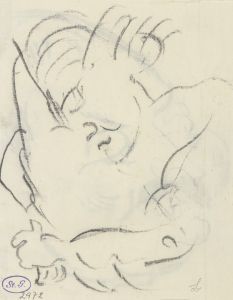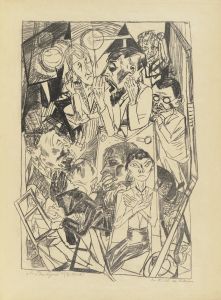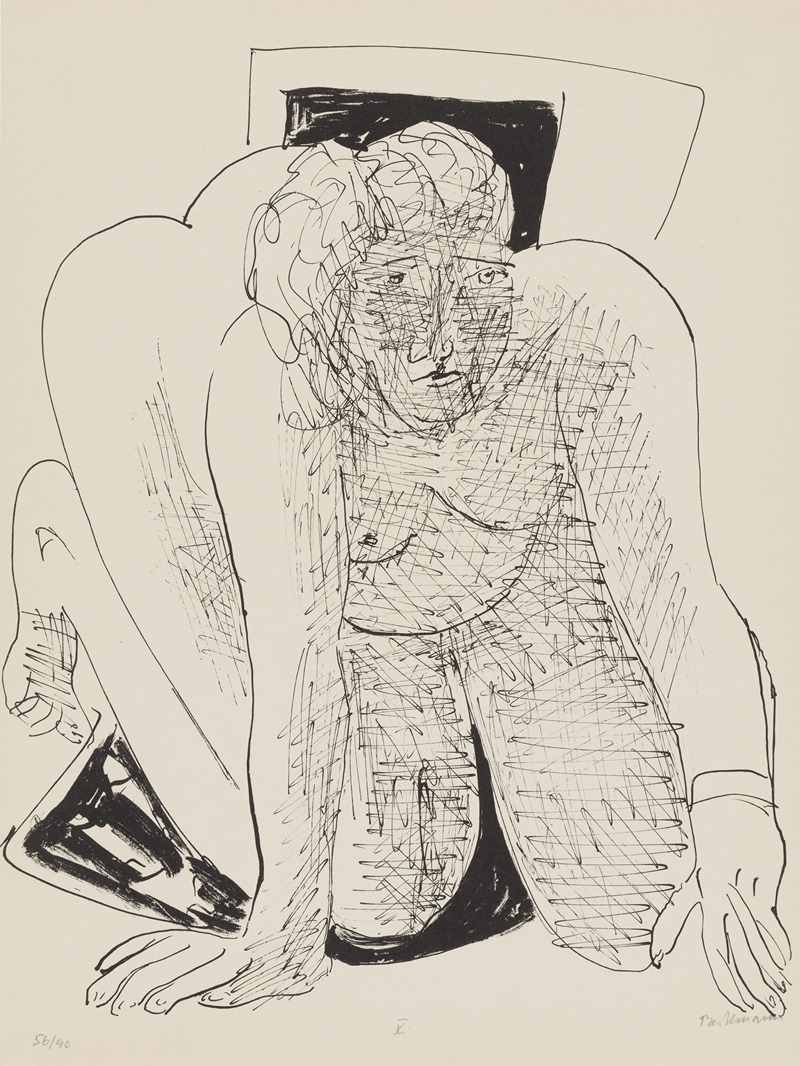
Crawling Woman
A hand-painted replica of Max Beckmann’s masterpiece Crawling Woman, meticulously crafted by professional artists to capture the true essence of the original. Each piece is created with museum-quality canvas and rare mineral pigments, carefully painted by experienced artists with delicate brushstrokes and rich, layered colors to perfectly recreate the texture of the original artwork. Unlike machine-printed reproductions, this hand-painted version brings the painting to life, infused with the artist’s emotions and skill in every stroke. Whether for personal collection or home decoration, it instantly elevates the artistic atmosphere of any space.
Max Beckmann's "Crawling Woman" is a painting that exemplifies the artist's distinctive style and thematic focus during the early 20th century. Beckmann, a German painter, is renowned for his contributions to the Expressionist movement, although his work often transcended strict categorization. Born in 1884, Beckmann's career spanned several tumultuous periods in European history, including both World Wars, which significantly influenced his artistic output.
"Crawling Woman" was created during a period when Beckmann was deeply engaged with themes of human suffering, existential angst, and the complexities of the human condition. These themes were often depicted through distorted figures and dramatic compositions, reflecting the chaos and trauma of the era. Beckmann's work is characterized by bold lines, stark contrasts, and a vivid color palette, all of which are likely present in "Crawling Woman," although specific details about the painting's composition and color scheme are not widely documented.
The painting's title, "Crawling Woman," suggests a focus on vulnerability and struggle, common motifs in Beckmann's oeuvre. His figures often appear in contorted or unnatural poses, symbolizing the inner turmoil and external pressures faced by individuals in a rapidly changing world. This approach aligns with the broader Expressionist movement, which sought to convey emotional experience rather than physical reality.
Beckmann's art was heavily influenced by his personal experiences, including his service as a medical orderly during World War I and his subsequent disillusionment with the societal structures that led to such widespread devastation. These experiences are reflected in the somber and often unsettling nature of his work. "Crawling Woman" can be seen as part of this larger narrative, capturing the essence of human fragility and resilience.
Throughout his career, Beckmann faced significant challenges, particularly during the rise of the Nazi regime in Germany. His art was labeled "degenerate" by the Nazis, leading to his dismissal from his teaching position at the Städelschule in Frankfurt and the removal of his works from German museums. In 1937, Beckmann fled to Amsterdam and later emigrated to the United States in 1947, where he continued to paint and teach until his death in 1950.
While specific exhibitions or collections featuring "Crawling Woman" are not extensively documented, Beckmann's work is held in high regard and is featured in numerous prestigious institutions worldwide. His paintings are celebrated for their profound emotional depth and technical mastery, securing his legacy as one of the most influential artists of the 20th century.
In summary, "Crawling Woman" by Max Beckmann is a testament to the artist's exploration of human suffering and resilience. Through his distinctive style and thematic focus, Beckmann captures the complexities of the human experience, leaving a lasting impact on the art world and continuing to resonate with audiences today.






